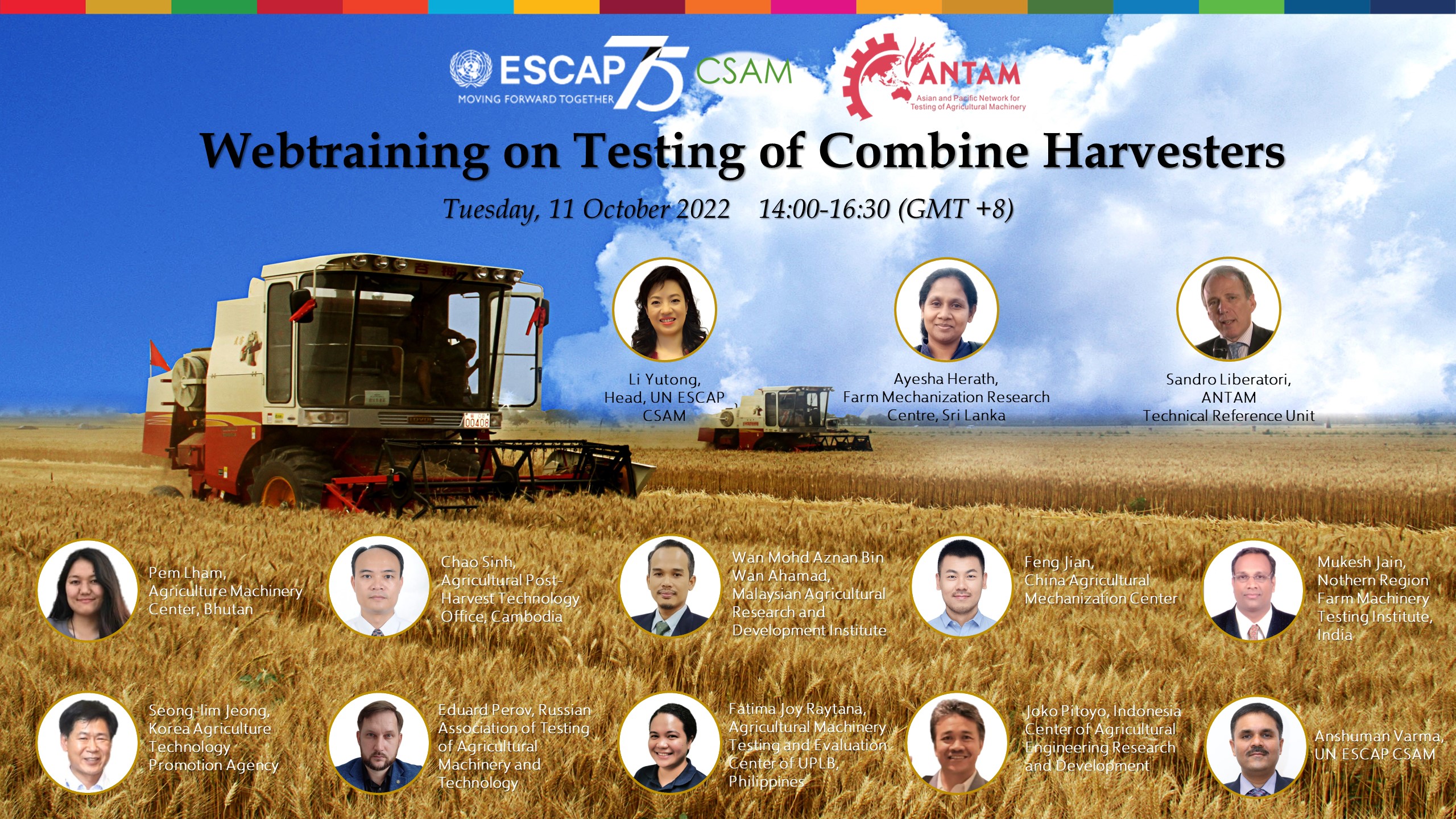Testing of Combine Harvesters Contributes to Reduction of Food Loss and Enhances Safety of Agricultural Operators

Meeting Documents
Combine harvesters are being adopted increasingly in the Asia-Pacific region, including in countries with a lower rate of mechanization, as they save time and costs combining major harvesting operations – reaping, threshing, and winnowing. While contributing to increased productivity and harvesting capacity, they still imply an elevated cost in terms of food loss when less efficient or poorly maintained machines are used. This can significantly affect national production; so by ensuring that combine harvesters are properly tested for efficiency we can contribute to food security, especially at a time when the world faces a food crisis due to disruptions in the trade of agrifood products following the impacts of the Covid-19 pandemic and geopolitical tensions. Furthermore, a lack of safety features and safety precautions may result in machinery malfunction and danger to the operators, for instance in presence of cutting and rotational assembly without appropriate cover. Thus, safety features incorporated in the combine harvesters and personal protective equipment for the operators play an important role in the effective use and management of combine harvesters, and harvesting operations at large.
To contribute tackling these issues in the region, CSAM organized a webtraining on testing of combine harvesters with a particular focus on items related to reducing food loss and enhancing occupational safety during harvesting operations. The event is the third in a series of webtrainings under the framework of the Asian and Pacific Network for Testing of Agricultural Machinery (ANTAM), an initiative led by CSAM that aims to harmonize testing standards for agricultural machinery in the Asia-Pacific region.
At the opening of the webtraining, Dr Yutoing Li, Head of CSAM, highlighted the role of testing of combine harvesters for guaranteeing food security, as it is crucial to reduce the inefficiencies in harvesting that take a serious toll on national and regional yields. She also reiterated the importance of safety testing, a dimension that has always been seriously considered in ANTAM’s webtrainings, and that is fundamental for ensuring the positive impacts of mechanization in building the long-term resilience of farming communities. The webtraining was also introduced by remarks from the Chair of the newly established ANTAM Technical Working Group on Combine Harvesters; Eng. Aisha Herath from the Farm Mechanization Research Center of Sri Lanka. Recalling that ANTAM standardized test codes are developed through harmonization of the existing codes and procedures used in the Asia-Pacific region, she welcomed the event as an opportunity for an initial overview of testing practices and needs related to combine harvesters in several ANTAM participating countries.
Dr. Sandro Liberatori, ANTAM Technical Reference Unit, presented an overview of the use and issues related to combine harvesters in the region, excerpted from a survey among ANTAM members. He then moderated a roundtable discussion where representatives from Bhutan, Cambodia and Malaysia elaborated on the needs of countries that do not have national testing codes or facilities. The roundtable was followed by a more detailed overview of the testing codes of China, India, Republic of Korea and Russian Federation, with a focus on specific test items related to efficiency (for reduction of food loss) and safety. In the final session, representatives from Indonesia, Philippines and Sri Lanka presented their national testing practices and/or codes, illustrating the process that was undertaken for their drafting and development.
Asian and Pacific Network for Testing of Agricultural Machinery (ANTAM) is an initiative led by the Centre for Sustainable Agricultural Mechanization (CSAM) of the United Nations Economic and Social Commission for Asia and the Pacific (ESCAP) that aims to harmonize testing standards for agricultural machinery in the Asia-Pacific region. This has the ultimate goal of facilitating trade but most importantly promotes the use of safe, efficient, and environmentally sound agricultural machinery in support of related Sustainable Development Goals.
